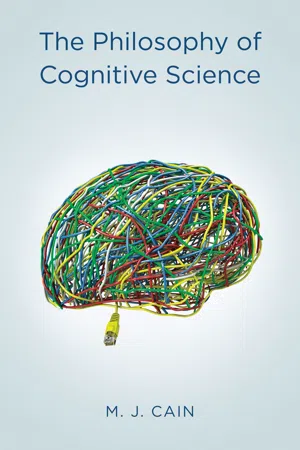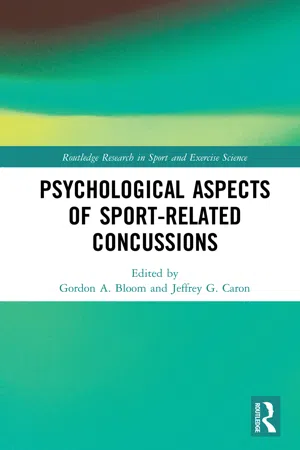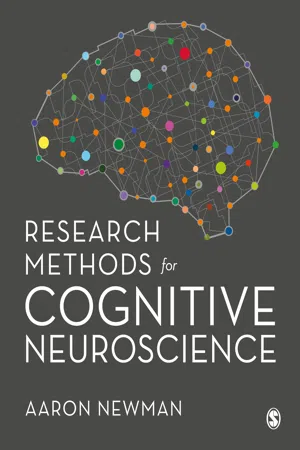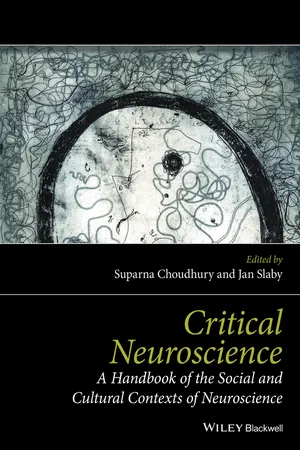Psychology
Brain and Neuropsychology
Brain and neuropsychology focus on understanding the relationship between the brain and behavior. This field explores how brain structure and function influence cognitive processes, emotions, and behavior. Neuropsychologists study the effects of brain injuries, diseases, and disorders on mental functions, and use this knowledge to develop interventions and treatments for individuals with neurological conditions.
Written by Perlego with AI-assistance
Related key terms
7 Key excerpts on "Brain and Neuropsychology"
- eBook - ePub
Clinical Neuropsychology
A Practical Guide to Assessment and Management for Clinicians
- Laura H. Goldstein, Jane E. McNeil(Authors)
- 2012(Publication Date)
- Wiley(Publisher)
The answer to this question depends on the setting in which the neuropsychologist is working. The two main areas are academia and clinical (or applied), and there are critical differences between the two. Neuropsychologists in academia drive our understanding of the relationship between brains and behaviour. New ideas regarding brain–behaviour relationships start as theories (e.g., the ‘theory of mind’ theory), which lead to the development of testable hypotheses and new methodologies (e.g., the ‘Sally Ann test’). The hypotheses are investigated under rigorous conditions and validated or modified as the results indicate. Gradually, such theories evolve into accepted paradigms and conceptual frameworks that improve our understanding of neurotypical development or our awareness of how known neurodevelopmental abnormalities may give rise to behavioural dysfunction. Eventually, research tasks may become standardized and commercially available to clinicians.Neuropsychologists in clinical practice can be found in acute care settings, where their assessments contribute to the monitoring and management of medical conditions known to impact neurocognitive functioning (e.g., stroke, metabolic disorders, brain tumours). Specialist advice regarding commissioning of child neuropsychology services, particularly within neurological settings, is available from the British Psychological Society (2004).Although children's mental health services have only recently begun to embed neuropsychological thinking and evaluations into the diagnostic process and intervention planning (Humphreys, 2006), the contribution of neuropsychology to child mental health can be traced to the Isle of Wight study in the 1960s, one of the first epidemiological investigations of child psychiatric disorders. This study documented the link between brain dysfunction and increased risk of psychiatric disorder (Graham and Rutter, 1968). Interestingly, the relationship between cognitive dysfunction in childhood and the risk of mental illness in adulthood - eBook - ePub
- Mark J. Cain(Author)
- 2015(Publication Date)
- Polity(Publisher)
6The Brain and Cognition1 Introduction
What is the relationship between the brain and the mind or between neural states and processes and cognitive states and processes? And what are the implications of the nature of that relationship for the role of the study of the brain in cognitive science? The purpose of this chapter is to address these questions in the light of recent developments in neuroscience and the rising prominence of that discipline both in the scientific community and in the popular imagination.2 Neuroscience and the history of cognitive science
As we saw in chapter 1 , cognitive science was founded on the basis of the rejection of substance dualism and of behaviourism. Accordingly, the mind was viewed as a physical system internal to the body that mediated the connections between the world external to the body and bodily behaviour or action. Thus, for example, when a wild animal approaches a person and they respond by throwing a stone in the animal’s direction, that response is mediated by processes internal to the body that serve to identify the wild animal and work out the best way to respond to it given the person’s current goals. As a result of this processing, instructions are issued to the motor control systems so that the person behaves in line with their plans. It was also a foundational assumption of cognitive science that such internal processes take place in the brain, that the brain is the seat of cognition. Given this, one might have expected that neuroscience, the scientific study of the brain, would have played a prominent role in cognitive science throughout its history. However, this has not been the case for several reasons.The first reason why neuroscience has had only a limited role in the history of cognitive science is a practical one. Neuroscientists often point out that the human brain is the most complex system in known existence, being made up of 100 billion neurons, most of which are connected to thousands of other neurons, giving rise to a system with 100 trillion internal connections. This complexity makes the human brain a very difficult system to study. Not surprisingly, our scientific understanding of the workings of the brain has historically lagged way behind that of our understanding of other aspects of the natural world. The upshot of this is that, for most of the history of cognitive science, neuroscientists haven’t known enough about the workings of the brain to make much of a contribution. However, things are rapidly changing on this front, in no small part on account of the emergence of technologies that enable us to scan the human brain. - Gordon A. Bloom, Jeffrey G. Caron(Authors)
- 2019(Publication Date)
- Routledge(Publisher)
3 The role of neuropsychology in understanding, assessing, and managing sport-related concussions Dave Ellemberg, Veronik Sicard, Adam Harrison, Jacob J. M. Kay, and Robert Davis Moore IntroductionNeuropsychology is the scientific study of human brain functioning. Clinical neuropsychologists study how behavior and cognition are influenced by the brain’s functioning and are concerned with the diagnosis and treatment of the behavioral and cognitive deficits caused by neurological disorders. Neuropsychologists have spearheaded the scientific and clinical research aimed at identifying the consequences of concussion, proper injury management, and the return to learn and play regimen (Ott, Bailey, & Broshek, 2018). They developed clinical assessment tools to identify cognitive deficits caused by concussion and to track injury recovery. With distinct training in brain-behavior relationships, psychological assessment, and psychometrics, neuropsychologists are uniquely qualified to evaluate an athlete’s cognitive, emotional, and psychological status following a concussion. In fact, in most Canadian provinces and territories, as well as in many states of the United States, the assessment of cognitive and psychological disorders caused by a neurological disorder is an act that is reserved to the clinical neuropsychologists.In recent years, the role of the clinical neuropsychologist in the assessment, treatment, and management of sport concussion has become more clearly defined as this domain of clinical practice has exploded. This has led to the emergence of a new discipline, known as sport neuropsychology, with a clinician having an interdisciplinary training in clinical psychology, sport psychology, and neuropsychology (Merz, Perry, & Ross, 2018). The critical role of the sports neuropsychologist has also contributed to the creation of the Sports Neuropsychology Society (SNS), a professional organization established in 2012. Its mission is “to advance the field of sports neuropsychology, to generate and disseminate knowledge regarding brain-behavior relationships as it applies to sports, and to promote the welfare of athletes at all levels” (Sports Neuropsychology Society, 2017).- eBook - ePub
- Aaron Newman(Author)
- 2019(Publication Date)
- SAGE Publications Ltd(Publisher)
1 The Organization of the Brain and How We Study ItLearning Objectives
After reading this chapter, you should be able to:- Define the scope and objectives of the field of cognitive neuroscience.
- Identify the fundamental types of cells in the brain, and how they communicate with each other.
- Describe the basic organization of the brain, across micro-, meso-, and macro-anatomical scales.
- Explain the value of measuring behaviour in understanding both cognition and brain activity.
- List the various brain imaging and stimulation methodologies covered in this book, and categorize them based on the type of data they measure.
Introduction
Cognitive neuroscienceis the field of study aimed at understanding how the brain produces thoughts, emotions, and behaviour. By and large, this field focuses on human beings specifically, and – given the general reluctance that most humans express to having their heads cut open – relies primarily on non-invasive methods for characterizing brain activity and structure. The field of cognitive neuroscience is quite new; although humans have a long-standing interest in the thoughts and behaviours of themselves and others, the idea that ‘There could be a human neurobiology of normal cognitive processes’ (Gazzaniga, 2018) was realized only three decades ago. Specifically, in 1988 a group of researchers from Washington University and the University of Oregon published the first studies of human cognition usingpositron emission tomography (PET)– a form of brain imaging that allowed researchers to localize changes in blood flow in the brain, using radioactively labelled oxygen (Petersen, Fox, Posner, Mintun, & Raichle, 1988; Posner, Petersen, Fox, & Raichle, 1988). Prior to this, the only ways to study brain activity in healthy, living humans employed EEG, which involves measuring brain electrical activity via electrodes attached to the outside of the head (or a related technique, MEG; however, this was restricted to a very small number of labs). Although as we will see in this book EEG is an extremely valuable tool, it does not provide accurate information as to where - eBook - ePub
Traumatic Brain Injury Rehabilitation
Practical Vocational, Neuropsychological, and Psychotherapy Interventions
- Robert Fraiser(Author)
- 2017(Publication Date)
- Routledge(Publisher)
Principles of Behavioral Neurology. Philadelphia, PA: F.A. Davis Company. A closely related field to neuropsychology is behavioral neurology. Composed primarily of neurologists, the field parallels and overlaps a great deal with neuropsychology due to the fact that both fields examine brain-behavior relationships. This text covers in depth the neurophysiology of brain function and dysfunction, and provides a clinical approach to evaluating various neurological conditions. A fine description of neuropsychological testing of older adults appears in this text, and is an example of how behavioral neurology and neuropsychology cover common professional and academic ground.Kolb, B. and Whishaw, I.Q. (1990). Fundamentals of Human Neuropsychology. Third Edition. New York: W. H. Freeman and Company. Understanding basic neuroanatomy and neurophysiology of the brain is foundational to understanding brain-behavior relationships. Kolb and Whishaw’s text provides such a foundation for those interested in examining the central nervous system in greater detail. This text is frequently used in graduate training programs as an introductory text to the physiological aspects of brain functioning. It is well-illustrated and easily read by the non-neuropsychologist.Prigatano, G.P. and Schacter, D.L. (Eds.). (1991). Awareness of Deficit After Brain Injury: Clinical and Theoretical Issues. New York: Oxford University Press. Neurobehavioral syndromes complicate the process of brain injury rehabilitation and add another dimension to the process of vocational reentry for the client with brain injury. These authors describe well what is known as deficit awareness syndromes in a range of brain disorders, including traumatic brain injury. This is a thoughtful volume that not only covers critical research issues but also clearly describes the clinical dilemmas that arise when working with an individual who evidences these problems.Luria, A.R. (1973). The Working Brain: An Introduction to Neuropsychology - eBook - ePub
Critical Neuroscience
A Handbook of the Social and Cultural Contexts of Neuroscience
- Suparna Choudhury, Jan Slaby(Authors)
- 2011(Publication Date)
- Wiley-Blackwell(Publisher)
Cultural neuroscience can serve as a conceptual and empirical framework for providing a critical approach to the study of the brain in other domains of application as well. One especially promising application of cultural neuroscience to critical neuroscience is the examination of the significance of culturally-situated beliefs, values, preferences, and meanings on the social consequences and experience of mental illnesses. Psychological and emotional distress may manifest at the neural level but, as noted above, patterns of neural activity can also vary as a function of one’s culture. Moreover, local norms and systems of beliefs regarding mental illness may also impact on one’s cognitions and attitudes towards psychopathology, which can shape manifestations of mental illness at the neural level. Reductionistic approaches to examining the neural bases of psychopathology risk overlooking and minimizing the crucial role that the social and cultural context may play on observable neural responses (Choudhury et al., 2009; Kirmayer, 2006). For this reason, it is especially important that approaches in biological psychiatry and neuropsychiatry consider the dynamic interactions between potential variations at the cultural level of analysis—such as attitudes, beliefs, norms, and values—and potential variations at the neural level of analysis when exploring the relationship between the brain and psychopathology (Chiao & Ambady, 2007). Rather than pinning the cause of cultural differences in the experience of mental illnesses to biological differences in the brain or genes, cultural neuroscience seeks to demonstrate the interplay of cultural phenomonena and biological processes in shaping cognition, attitudes, behaviors, and human experience.However, in order to achieve this important enrichment of psychiatry, it is essential that cultural neuroscience is linked productively to existing bodies of work in cultural anthropology and the social sciences more broadly. Anthropology in particular has the potential to become a nuanced contributor to cultural neuroscience through its views on how culture shapes social environments and partakes in the structuring of individual minds (Seligman & Brown, 2010). The part of the agenda of critical neuroscience that aims to promote and facilitate genuinely interdisciplinary approaches would be helpful in introducing the concepts, vocabularies, and methodologies of anthropology to cultural neuroscience. Given the history of the study of culture in the brain sciences, it is crucial to apply particular attention to the conceptualization of culture in these studies. Narrowly-defined or “broad brush stroke” labels can be informed by rigorous debates and fieldwork from anthropology, to strive to use groupings that are meaningful and get closer to the complexity of culture in the real world, where forces of globalization, for instance, make us reconsider culture as fixed, bounded entities (Choudhury & Kirmayer, 2009; Langlitz, Chapter 11, this volume). However, the sometimes narrow renderings of culture currently in the neuroscience literature, result from very real constraints imposed by the methodologies and technologies involved in neuroscience experiments. Clearly, these differences between disciplines must be acknowledged—and worked with. Critical neuroscience reminds us of the historical contingencies and cultural variation of the categories and phenomena that we study in the lab, an awareness of which might, in turn, open up alternative variables to study in relation to brain activity (Choudhury, 2010). These alternatives may be equally operationalizable in the lab setting but might open up the space of conceptual possibilities for interpretation. - eBook - ePub
Neurocriminology
Forensic and Legal Applications, Public Policy Implications
- Diana Concannon(Author)
- 2018(Publication Date)
- CRC Press(Publisher)
2Brain Basics
How Neurocriminology Is Possible
The human brain has 100 billion neurons, each neuron connected to 10 thousand other neurons. Sitting on your shoulders is the most complicated object in the known universe. Michio KakuThe chief function of the body is to carry the brain around. Thomas A. EdisonLearning Objectives- Describe the role of neurotransmitters in brain functioning.
- Identify the regions of the brain and the functions generally correlated with these regions.
- Recognize the common causes of brain dysfunction.
Introduction
Three pounds is responsible for determining if we breathe and how we move, the manner in which we communicate and respond, what we think and how we feel, how we consolidate, process, and remember information, and how we make this information meaningful. Three pounds is responsible for who we are.For centuries, philosophers, psychologists, and physicians have recognized that these three pounds—the brain—control mental processes related to sensation, thought, and memory. Seminal cases, such as those of Phineas Gage and H.M., remain standard in the curriculum of students of psychology, biology, and neuroscience (see Box 2.1
Learn about this page
Index pages curate the most relevant extracts from our library of academic textbooks. They’ve been created using an in-house natural language model (NLM), each adding context and meaning to key research topics.






